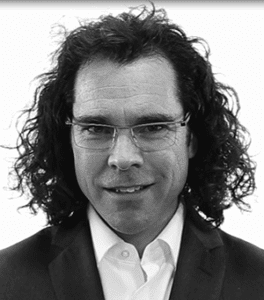
Several years ago, Jeff Immelt, former chairman and CEO at General Electric, gave a lecture at Stanford University. During his lecture, he directed a point to the students, but it was just as important for the faculty and administrative leadership gathered to hear as well: “The things you’re learning while you’re here are going to be pretty irrelevant relatively soon.”
Immelt’s point was not about the irrelevance of a Stanford education; rather, he was noting the need for lifelong continuous learning.
Immelt is not the only one noticing the need for continual learning. His predecessor, Jack Welch, famously said, “An organization’s ability to learn, and translate that learning into action rapidly, is the greatest competitive advantage.” Samuel Arbesman, a senior scholar at the Kauffman Foundation and a research fellow at the Institute for Quantitative Social Science at Harvard University, wrote about it in his book, “The Half-Life of Facts: Why Everything We Know Has an Expiration Date.” Thirty years prior, systems theorist and architect Buckminster Fuller detailed the Knowledge Doubling Curve in his book, “The Critical Path.”
Knowledge needs to expand and grow for innovation to be realized. To illustrate this, Fuller tracked major waves of innovation relative to the knowledge needed to create new capabilities. At the turn of the 20th century, the Knowledge Doubling Curve was estimated to be 100 years — in other words, it would take 100 years for current knowledge to double.
At the time, water was being used to convert energy into power and mechanization of work was being established. Harnessing steam power and realizing the value of railway commerce were a couple of the next innovations and required doubling of knowledge to achieve. It was also realized that the time needed to achieve the knowledge necessary for these technologies was less than in the earlier wave.
The next wave brought about the power of electricity and the combustion engine, and yes, the knowledge needed to achieve them was doubled, in half the time. Like Gordon Moore’s prediction of the transistor shrinking by half every couple of years while doubling in processor speed, Fuller realized that knowledge needed to double to achieve the next generation of innovation, and it was doing so at an increasingly rapid pace.
Today, the “internet of things” has sped the pace of knowledge so drastically that while many estimate the current curve of knowledge doubling to be about 12 years, according to IBM, it soon could be 12 hours.
Because current knowledge is becoming outdated more quickly, the pace at which people learn must also speed up to keep up, let alone secure a competitive advantage. Our knowledge has an increasingly limited shelf life. What was once known as truth is quickly being challenged by innovation and new knowledge. As we aim to solve problems, innovate new solutions, and develop our organizational leaders and teams, we must continuously learn to expand the frontier of knowledge and capacity — at the individual and enterprise levels. I can offer four practices for doing so.
First, stop believing everything you think. Past success is no guarantee of future success, and there is no recipe to copy from yesterday and apply today. To succeed, we must overcome any success delusion and bias we have and focus on continual learning, situational analysis, collaborative modeling of alternatives, quick decision-making, and disciplined follow-up and follow-through, all while benchmarking progress to adjust as new data give way to previously known facts.
Second, know that success is a moving target. Goals cannot be static. Markets, competition and expectations are dynamic, and we must equip our human capital to expect change and drive toward it. We must enable change through collaborative learning.
The best way to enable change and prepare to adjust individually and collaboratively is with a culture of brutal honesty, constructivist feedback and desire to question current facts. That’s the third practice: Recognize that feedback accelerates learning.
The fourth is to establish a learning mindset on both good days and bad. Regardless of our effort, some days will result in better outcomes. But each day provides opportunities to learn. If we ignore these opportunities, we increase the chance of yesterday’s frustrations from setbacks hijacking today’s opportunities for success.
Keep learning on the go with the CLO Breakfast Club Podcast.
Tim Rahschulte is former CLO of Evanta, current CEO at the Professional Development Academy and professor of business at George Fox University. He is co-author of “My Best Advice: Proven Rules for Effective Leadership.” He can be reached at editor@CLOmedia.com.














